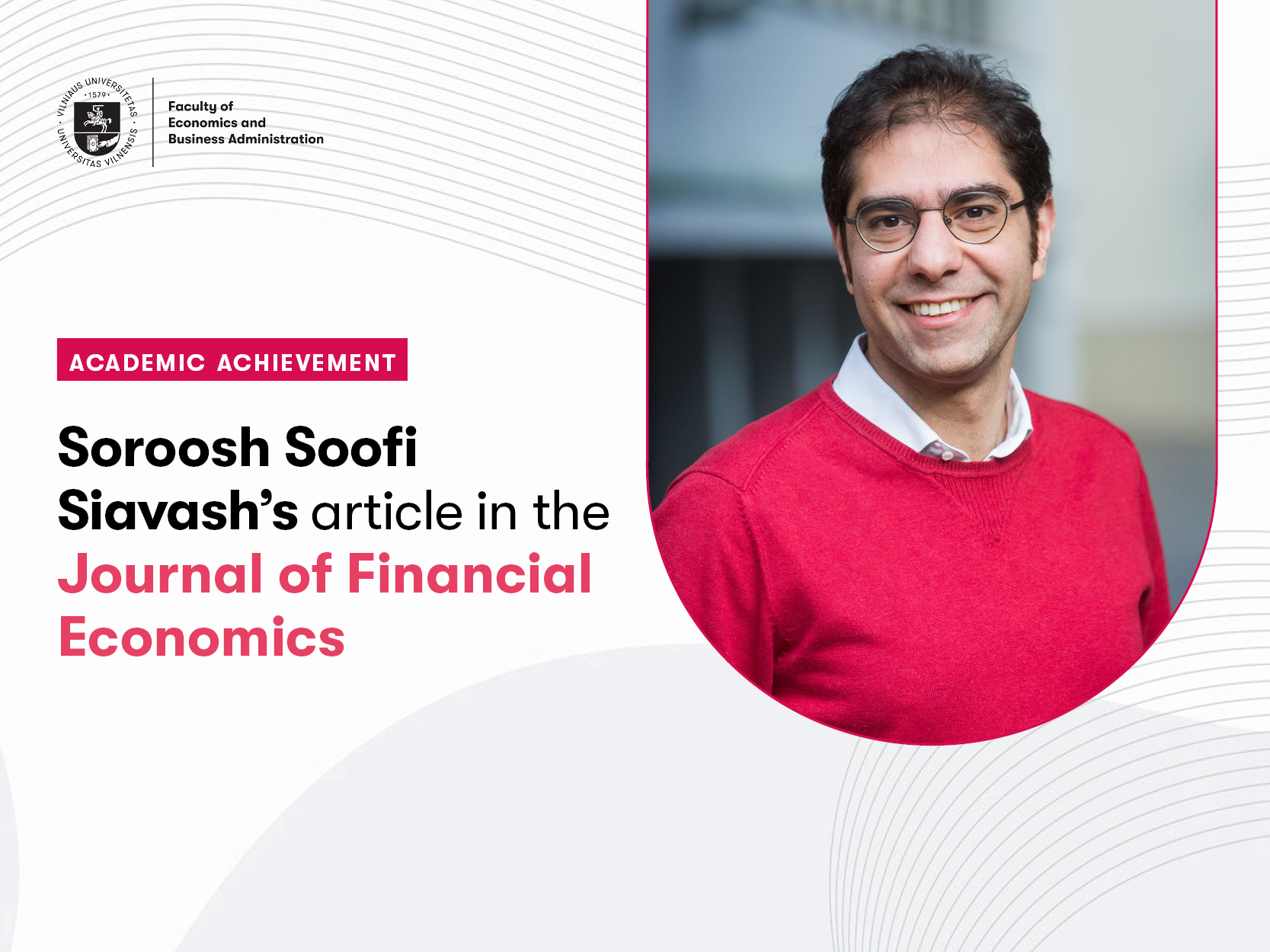We are pleased to share the news that Soroosh Soofi Siavash, Junior Research Fellow at the VU EVAF, together with his colleague Emanuel Moench (Deutsche Bundesbank), has published an article "What moves treasury yields?" in the top level (AJG 4* level) academic journal "Journal of Financial Economics". This is a particularly important achievement as it is the third publication at this level in the Faculty's history.
S. S. Siavash and E. Moench's article "What moves treasury yields?" summary:
We all know that U.S. Treasuries play an important role in financial markets. Many credit-related interest rates are priced off the Treasury yield curve. So, any movements in Treasuries can affect various credit markets, for example, affecting investment and saving decisions of households. In that sense, any movement in the yield curve can transmit to the rest of the economy. As such, understanding what moves Treasury yields is important for understanding macroeconomic transmission of shocks more broadly.
However, there has been surprisingly little effort to understand the sources of yield curve variation. There is a debate in the term structure literature about whether there are hidden factors in the term structure. These are factors or shocks that supposedly do not affect yields today but moves Treasury yields in the future. So, we do not see them by looking at today's yield curve, but they are very informative about how yields move in the future. This literature is a reminiscent of news shock in the macroeconomics literature. There is a large literature in macroeconomics which tries to identify shocks that have delayed effect on macroeconomic fundamentals, primarily on total factor productivity (TFP). Despite the similarities between these two literatures, the methodologies used in them are very different. In the term structure literature, people use return regression models or affine term structure models. In the news shock literature, other methods have been used.
In this paper, we put these two literatures together. We identify a shock, labeled as yield news shock, that does not move Treasury yields on impact but explains a maximum share of their future variation. This shock doesn't show up in yields immediately as it shifts term premiums and expected future short rates in opposite directions. While the response of term premiums is relatively short lived, expected short rates move persistently. As a result, the shock explains a staggering 50% of Treasury yield variation several years out.
We provide economic interpretation for the yield news shock by studying how it affects several macroeconomic and financial variables. We find that the shock is associated with a sharp response of financial market volatility. It is also associated with a strong movement of leading business cycle indicators. So, a shock that does not show up in today's yield curve but moves yields only in the future is associated with heighten financial volatility and is strongly correlated with leading economic indicators.
Separately identified innovations to stock market volatility and business cycle news account for the bulk of variation in news about future Treasury yields. They also move term premiums and expected future short rates in opposite directions, with the term premium response being transient and the expected short rate response quite persistent. The reason is that the Federal Reserve has historically slashed rates aggressively in response to high stock market volatility and bad news about the business cycle.
In sum, if you want to understand what moves Treasury yields, look beyond the yield curve today.
We are indebted to our colleagues and several seminar participants at Vilnius University, Bank of Lithuania, the German Institute for Economic Research (DIW), Humboldt University Berlin, the San Francisco Fed/Bank of Canada Workshop on Advances in Fixed Income and Macro-Finance Research, the International Association for Applied Econometrics, the Baltic Economic Conference, the North American Summer Meeting of the Econometrics Society and the University of Birmingham for many ideas and discussions. We are also indebted to Nikolai Roussanov and an anonymous referee for their comments on earlier drafts. The first draft of this paper was begun when Soroosh Soofi-Siavash joined as a research fellow to the Faculty of Economics and Business Administration at Vilnius University.
